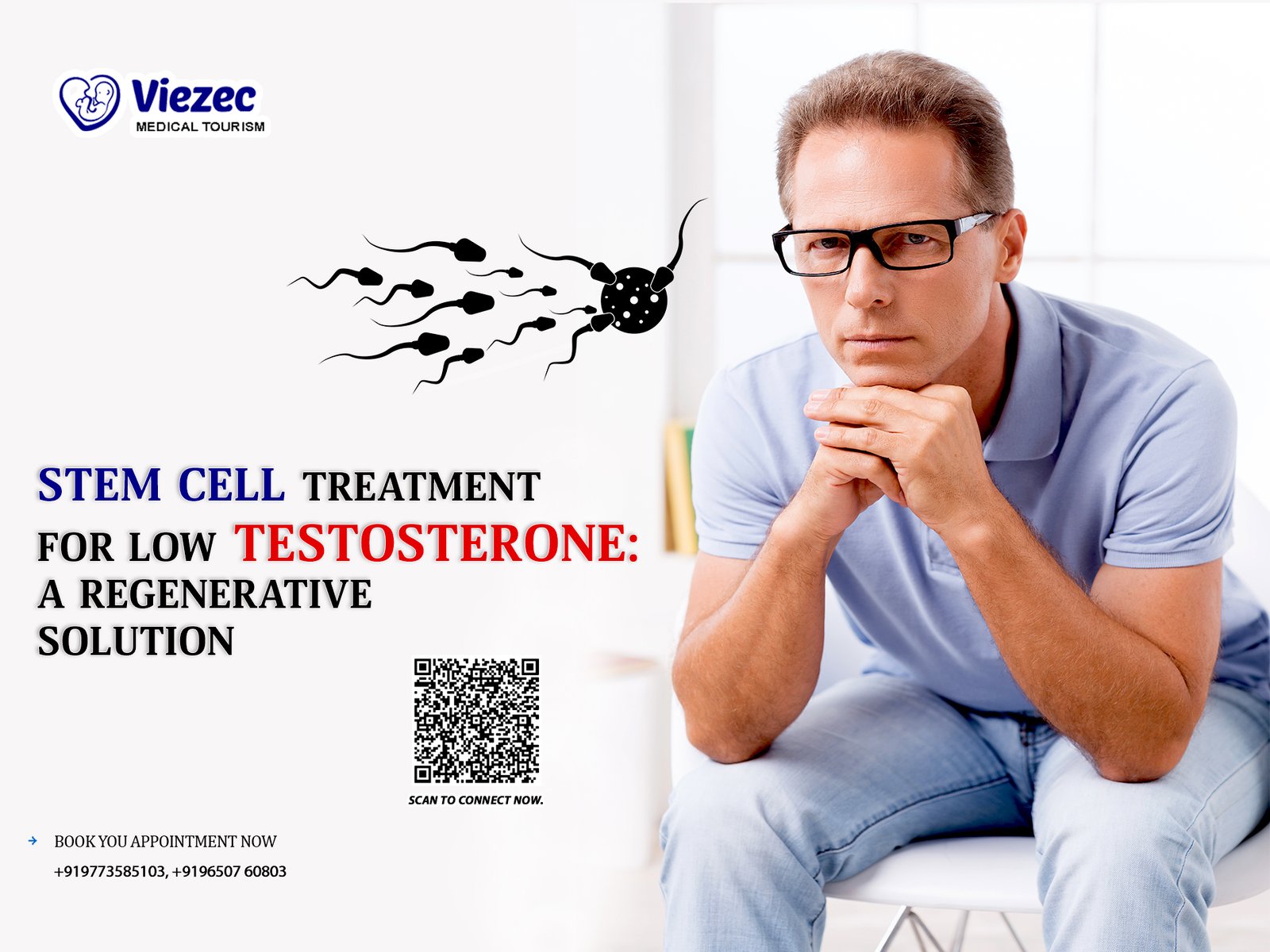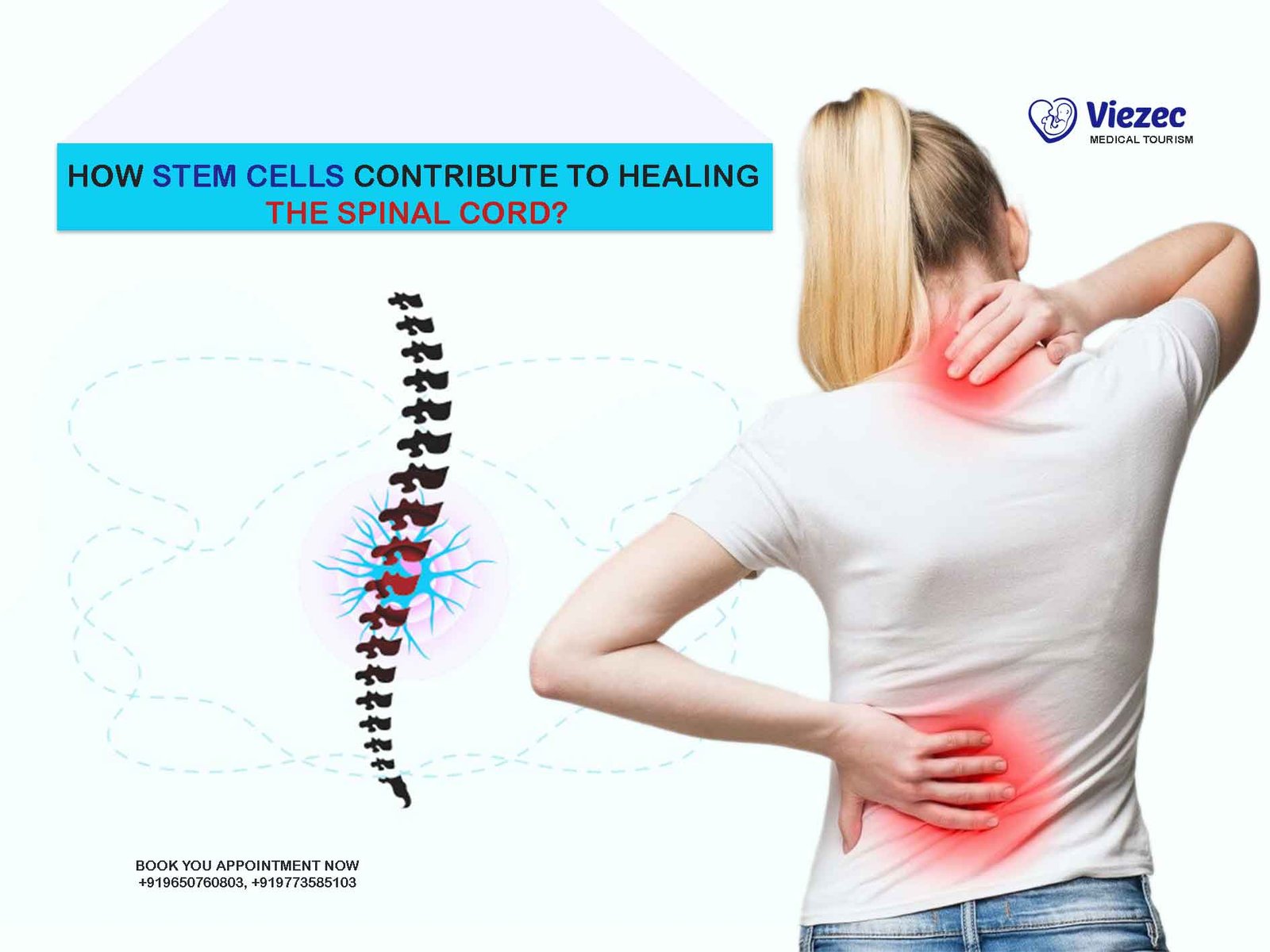KEY TAKEAWAYS
Low testosterone, medically referred to as hypogonadism, occurs when the body fails to produce adequate amounts of the vital hormone testosterone. This hormone plays a key role in numerous physiological functions, such as muscle development, bone density maintenance, mood regulation, and overall vitality. For individuals struggling with low testosterone levels, stem cell therapy presents an innovative and regenerative approach that not only restores hormonal balance but also enhances overall quality of life. In this article, we’ll delve into how stem cell treatment works, its wide-ranging benefits, and why it may be a more effective and sustainable alternative to traditional testosterone replacement therapy (TRT).
What Is Low Testosterone and How Does It Impact Your Health?
Testosterone is a crucial hormone for both men and women, though it is more abundant in men. As men age, their testosterone levels naturally decline, but for some, these levels drop significantly, leading to low testosterone.
Common Symptoms of Low Testosterone
Low testosterone can manifest in several physical and emotional symptoms, including:
-
Fatigue and decreased energy: Individuals often feel tired, even after a full night’s sleep.
-
Loss of muscle mass and strength: Testosterone plays a role in muscle repair and growth.
-
Increased body fat: Low testosterone can cause a reduction in muscle mass, leading to an increase in body fat, particularly around the abdomen.
-
Decreased libido: Testosterone is a key driver of sexual desire in both men and women.
-
Mood changes: Anxiety, depression, and irritability are common in people with low testosterone levels.
-
Cognitive decline: Testosterone affects brain function, and its deficiency can contribute to memory problems and reduced cognitive abilities.
Long-Term Effects on Overall Well-Being
If left untreated, low testosterone can lead to more serious long-term health complications:
-
Osteoporosis: Testosterone helps maintain bone density, and a lack of it increases the risk of brittle bones and fractures.
-
Heart health: Some studies suggest that low testosterone may be linked to an increased risk of cardiovascular diseases, although research is still ongoing.
-
Reduced quality of life: Decreased testosterone can significantly impact a person’s overall sense of well-being, affecting relationships, mental health, and productivity.
Current Treatments for Low Testosterone
The conventional method of managing low testosterone is through hormone replacement therapy (HRT). This typically involves synthetic testosterone delivered via injections, topical gels, or small pellets placed under the skin. While these treatments can successfully increase testosterone levels and relieve associated symptoms, they also carry certain risks. Potential side effects may include a higher likelihood of blood clots, cardiovascular complications, and mood fluctuations. Moreover, HRT mainly focuses on reducing symptoms rather than addressing the root cause of testosterone decline.
Low Testosterone & Hormone Imbalances in a Nutshell
When testosterone drops, men often face challenges like low energy, irritability, muscle loss, and reduced vitality. Traditional treatments such as HRT can help, but they don’t always fix the root cause. Stem cell therapy takes a different approach—helping the body regenerate and restore its own hormone balance.
Why Men Consider Stem Cell Therapy:
-
Restores natural testosterone levels by repairing tissue
-
Boosts motivation and focus, reducing brain fog
-
Supports stronger muscles and physical endurance
-
Stabilizes mood, bringing back confidence and positivity
-
Offers long-term potential, not just quick fixes
How Stem Cell Therapy Works for Low Testosterone
Stem cell therapy is a cutting-edge treatment that harnesses the regenerative power of stem cells to repair and rejuvenate tissues and organs in the body. In the case of low testosterone, stem cells are used to stimulate the body’s natural ability to produce testosterone, offering a holistic solution.
The Mechanism Behind Stem Cell Treatment
Stem cell therapy involves the use of mesenchymal stem cells (MSCs), which possess the remarkable ability to differentiate into various types of cells, including those responsible for hormone production. These stem cells are often harvested from the patient’s own body (autologous stem cells), ensuring minimal risk of rejection or adverse reactions. Once introduced into the body, the stem cells work to regenerate damaged tissues and stimulate the production of testosterone. In India, Viezec offers cutting-edge stem cell therapies, utilizing advanced techniques to address low testosterone and other health concerns. This personalized approach ensures that patients receive a safe and effective treatment that promotes long-term hormonal balance and overall well-being.
How Stem Cells Stimulate Testosterone Production
Stem cells can rejuvenate the testes or other hormone-producing organs by triggering the body’s regenerative processes. They help repair damaged tissues and activate dormant cells responsible for hormone synthesis. This results in a natural boost in testosterone levels, potentially eliminating the need for synthetic hormone replacements.
Traditional Hormone Replacement Therapy (HRT) vs. Stem Cell Therapy
| Traditional Method (HRT) | Stem Cell Method |
|---|---|
| Provides synthetic testosterone through injections, gels, or pellets to temporarily boost hormone levels. | Uses stem cells to stimulate natural testosterone production by repairing or regenerating damaged testicular tissue. |
| Focuses on symptom management – raises testosterone but doesn’t fix root cause. | Targets the underlying cause of testosterone decline by enhancing the body’s own regenerative capacity. |
| Effects last only while therapy continues; requires ongoing treatment. | Potential for longer-lasting or permanent improvement by restoring natural function. |
| Carries risks such as blood clots, heart problems, prostate issues, and mood changes. | Generally considered safer; risks mainly depend on procedure quality and cell source. |
| Standardized doses, less tailored to individual biology. | More personalized, as stem cells adapt to the body’s repair needs. |
| Goal: maintain testosterone levels and reduce symptoms. | Goal: regenerate, restore, and achieve natural hormone balance. |
Benefits of Stem Cell Therapy for Low Testosterone
Stem cell therapy offers numerous benefits for those suffering from low testosterone. Unlike traditional hormone replacement therapies, stem cell treatment focuses on the root cause of the problem—regenerating the body’s ability to produce testosterone naturally.
Regenerating Hormonal Balance
One of the primary benefits of stem cell therapy is its potential to restore hormonal balance. Rather than artificially supplementing testosterone, stem cells work to regenerate the body’s own ability to produce testosterone, leading to a more natural and sustained improvement in hormone levels.
Improved Energy Levels and Vitality
As testosterone levels increase, many patients report a significant improvement in energy and vitality. Restoring testosterone to normal levels can help reverse the fatigue associated with low testosterone, allowing individuals to feel more active and engaged in daily life.
Why Stem Cell Therapy Could Be a Better Alternative
Stem cell therapy offers a more sustainable solution by stimulating the body’s natural testosterone production, leading to longer-lasting results. Unlike TRT, stem cells do not artificially manipulate hormone levels, which can prevent the adverse side effects commonly associated with testosterone replacement.
Understanding the Safety and Risks of Stem Cell Treatment for Low Testosterone
While stem cell therapy is promising, it’s essential to understand both the safety and potential risks before undergoing treatment.
What You Need to Know About Potential Side Effects
Stem cell therapy is generally considered safe, especially when the cells are derived from the patient’s own body. However, potential risks include:
-
Infection: As with any medical procedure, there is a risk of infection at the injection site.
-
Inflammation: Some patients may experience mild inflammation or swelling after treatment.
-
Unpredictable outcomes: Stem cell therapy is still being researched, and results may vary.
Ensuring a Safe Treatment Process
To ensure the safety of stem cell therapy, it is crucial to undergo the treatment with a reputable healthcare provider who specializes in regenerative medicine. Proper screening and follow-up care are essential to monitor progress and manage any complications.
The Procedure: What to Expect During Stem Cell Therapy
Preparation for Treatment
Before undergoing stem cell therapy for low testosterone, patients typically undergo a thorough medical evaluation to ensure they are suitable candidates for the treatment. This may include blood tests, hormone level assessments, and imaging scans.
Post-Treatment Care and Recovery
After the procedure, patients can expect a short recovery period. Mild discomfort at the injection site is common, but most patients can resume normal activities within a few days. It’s important to follow the healthcare provider’s aftercare instructions to optimize healing and minimize risks.
Is Stem Cell Treatment Effective for Low Testosterone?
What the Latest Research Shows
Recent studies strongly suggest that stem cell therapy can significantly improve testosterone levels and effectively alleviate symptoms of low testosterone, such as fatigue, low libido, and mood changes. Although research is still in the early stages, initial clinical trials have shown promising results. Many patients report experiencing long-term improvements in energy, mood, vitality, and overall well-being, highlighting the potential of stem cells to provide lasting benefits beyond conventional treatments.
Patient Success Stories and Case Studies
Numerous patients have shared their success stories after undergoing stem cell therapy for low testosterone. These real-life testimonials demonstrate the transformative potential of stem cell treatment, with many individuals experiencing a marked improvement in their hormonal balance, energy levels, and quality of life. The consistent positive outcomes underscore stem cell therapy’s ability to restore not just testosterone levels but also a sense of vitality and renewed health.
Who Can Benefit from Stem Cell Therapy for Low Testosterone?
Candidates for Treatment
Stem cell therapy is often recommended for individuals suffering from low testosterone, particularly those who have not seen sufficient improvement from traditional treatment methods, such as testosterone replacement therapy (TRT). Candidates typically include those seeking a more natural, regenerative solution that addresses the underlying causes of their condition rather than merely masking the symptoms. People who want to restore their hormonal balance without the long-term reliance on synthetic hormones are also ideal candidates for this advanced treatment.
How to Know If Stem Cells Are the Right Solution for You
To determine if stem cell therapy is a viable option, it is crucial to consult with a healthcare provider who specializes in regenerative medicine. A thorough assessment of your overall health, current testosterone levels, and any previous treatments you have undergone will help your provider determine whether stem cell therapy is the most suitable solution for your unique situation. This personalized evaluation ensures the best approach is chosen, tailored to your specific needs and health goals.
How Stem Cells Restore Testosterone Naturally
Stem cells play a crucial role in regenerating the body’s natural processes, stimulating the repair and rejuvenation of hormone-producing tissues. This leads to a gradual increase in testosterone production, helping restore balance without relying on external supplements. Unlike synthetic testosterone, which artificially raises hormone levels, stem cells promote the body’s inherent ability to function optimally, encouraging it to resume normal testosterone production.
By harnessing the regenerative potential of stem cells, the body can naturally enhance its testosterone output over time. This process ensures a more organic and sustainable solution, as stem cells work with the body’s natural systems to address the underlying issue. As a result, patients experience not only a boost in testosterone but also improved overall health, energy, and vitality, without the side effects typically associated with synthetic treatments.
Stem Cell Therapy’s Role in Overall Health and Wellness
Beyond improving testosterone levels, stem cell therapy provides a wide range of additional health benefits, making it a comprehensive and holistic treatment option. Here’s how it can enhance overall wellness:
-
Better Joint Function: Stem cells promote the regeneration of cartilage, improving joint flexibility and reducing pain, which can be especially beneficial for individuals suffering from joint discomfort or arthritis.
-
Improved Muscle Strength: By stimulating the repair of damaged muscle tissue, stem cell therapy helps to restore muscle mass and strength, aiding in overall physical performance and mobility.
-
Enhanced Skin Elasticity: Stem cells encourage collagen production, leading to improved skin texture, firmness, and elasticity, which can contribute to a youthful appearance and healthier skin.
-
Increased Bone Density: Stem cells help regenerate bone tissue, supporting healthier bones and reducing the risk of osteoporosis and fractures.
-
Better Cardiovascular Health: Stem cell therapy may help improve heart function and blood flow by promoting the repair of damaged heart tissue.
By addressing multiple aspects of health, stem cell therapy not only restores hormonal balance but also supports the body’s overall regeneration, offering long-term improvements in quality of life.
Success Rates: Can Stem Cell Therapy Fully Restore Testosterone Levels?
The success of stem cell therapy for low testosterone varies from patient to patient, but many individuals report a significant improvement in testosterone production. While some may notice positive results within a few weeks, it often takes several months for the full benefits to become apparent. Success rates tend to be higher in patients with mild to moderate testosterone deficiency, as their bodies are more responsive to the regenerative effects of stem cell treatment. This approach offers a promising long-term solution for those seeking to restore hormonal balance naturally.
Begin Your Journey to Better Hormone Balance
Your path to renewed strength, confidence, and wellness starts here. At Viezec, we combine advanced stem cell therapy with tailored treatment strategies to restore natural hormone function and improve overall well-being. Whether your goal is more energy, sharper focus, or enhanced vitality, our compassionate team is ready to help.
Schedule your free consultation today by calling +91-96507 60803 and let Viezec guide you toward a healthier, more balanced life.











